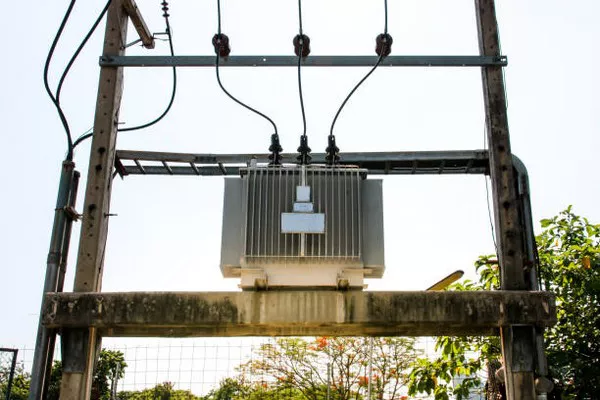In the realm of electrical engineering and power distribution, transformers play a pivotal role. Specifically, step-up transformers are integral in the transmission of electrical power over long distances. One fundamental aspect of their operation is the decrease in current that accompanies an increase in voltage. This phenomenon is not merely a byproduct but a deliberate and essential feature of electrical power systems. This article delves into the mechanics of step-up transformers, elucidates why the current decreases, and explores the broader implications of this characteristic in power distribution.
Understanding Step-Up Transformers
A transformer is a static electrical device that transfers electrical energy between two or more circuits through electromagnetic induction. Step-up transformers specifically increase the voltage from the primary winding (input) to the secondary winding (output). The primary winding receives electricity at a lower voltage and, through the process of electromagnetic induction, the secondary winding outputs electricity at a higher voltage.
The core principle that governs transformer operation is Faraday’s Law of Electromagnetic Induction. According to this law, a change in the magnetic environment of a coil of wire will induce an electromotive force (EMF) in the coil. For a transformer, when alternating current (AC) flows through the primary winding, it creates a varying magnetic field. This varying magnetic field induces a voltage in the secondary winding. The voltage ratio between the primary and secondary windings is directly proportional to the ratio of the number of turns in these windings.
Mathematical Basis: The Transformer Equation
The relationship between the voltages and the number of turns in the windings of a transformer is given by the transformer equation:
𝑉𝑠/𝑉𝑝=𝑁𝑠/𝑁𝑝
where:
- Vs is the secondary voltage,
- Vp is the primary voltage,
- Ns is the number of turns in the secondary winding,
- Np is the number of turns in the primary winding.
For a step-up transformer, 𝑁𝑠>𝑁𝑝Ns>Np, thus 𝑉𝑠>𝑉𝑝Vs>Vp.
The current relationship is inversely proportional to the voltage ratio due to the conservation of power (assuming an ideal transformer with no losses):
Is/Ip=Np/Ns=Vp/Vs
where:
Is is the secondary current,
Ip is the primary current.
Since Vs>Vp, it follows that Is<Ip.
Why Current Decreases in a Step-Up Transformer
The decrease in current in a step-up transformer can be explained through the principle of power conservation. Electrical power (P) is the product of voltage (V) and current (I):
𝑃=V×I
For an ideal transformer with no losses:
Pprimary=Psecondary
Thus,
Vp×Ip=Vs×Is
Given that 𝑉𝑠>𝑉𝑝Vs>Vp, it must be that Is<Ip to maintain the equality. This inverse relationship ensures that while voltage is increased, the current is proportionally decreased.
Implications for Power Transmission
The decrease in current with a corresponding increase in voltage has significant implications for power transmission. Here are several key benefits:
Reduced Power Losses: Power loss in electrical transmission lines is given by 𝑃𝑙𝑜𝑠𝑠=𝐼2𝑅Ploss=I2R, where 𝐼I is the current and 𝑅R is the resistance of the transmission line. By reducing the current, power losses due to the resistance of the conductors are minimized. This is crucial for efficient long-distance power transmission.
Improved Efficiency: Lower current allows the use of thinner and lighter conductors, which are less expensive and easier to handle. This results in lower infrastructure costs and improved overall efficiency of the power grid.
Enhanced Voltage Regulation: Higher voltage levels help in maintaining better voltage regulation throughout the transmission network. This ensures that the end-users receive a stable and consistent voltage, improving the reliability and quality of power supply.
Minimized Heat Generation: Lower current reduces the heat generated in the conductors. Excessive heat can cause damage to the insulation and other components of the transmission system, leading to failures and increased maintenance costs.
SEE ALSO Transformer Ratings: Why kVA and Not kW?
Practical Applications and Examples
Step-up transformers are commonly used in various stages of electrical power distribution:
Generation to Transmission: Power plants generate electricity at relatively low voltages (e.g., 11-25 kV). Step-up transformers increase this voltage to much higher levels (e.g., 220-765 kV) for efficient transmission over long distances.
Transmission to Substations: As electricity approaches the consumption areas, step-down transformers reduce the voltage to safer, more manageable levels for distribution (e.g., 33 kV).
Industrial App
lications: Some industrial processes require high voltage for specific equipment. Step-up transformers are used to cater to these needs directly from the primary distribution network.
Case Study: The Role of Step-Up Transformers in HVDC Systems
High Voltage Direct Current (HVDC) transmission systems exemplify the utility of step-up transformers. In HVDC, AC power from the generating station is first converted to high-voltage DC using converters. Step-up transformers are employed to increase the AC voltage before conversion, optimizing the efficiency of subsequent DC transmission.
HVDC systems are particularly advantageous for underwater cables, long-distance overhead lines, and asynchronous grid interconnections. The lower current enabled by step-up transformers significantly reduces losses and enhances the feasibility of transmitting power over very long distances, sometimes spanning entire continents.
Conclusion
Step-up transformers are indispensable in modern electrical power systems. Their ability to increase voltage while decreasing current is fundamental to the efficient and reliable transmission of electricity. By reducing current, they minimize power losses, lower costs, enhance voltage regulation, and improve overall system efficiency. As the demand for electricity grows and the complexity of power grids increases, the role of step-up transformers will continue to be vital in meeting global energy needs efficiently and sustainably. Understanding the principles and benefits of these transformers is essential for anyone involved in the field of electrical engineering and power distribution.

